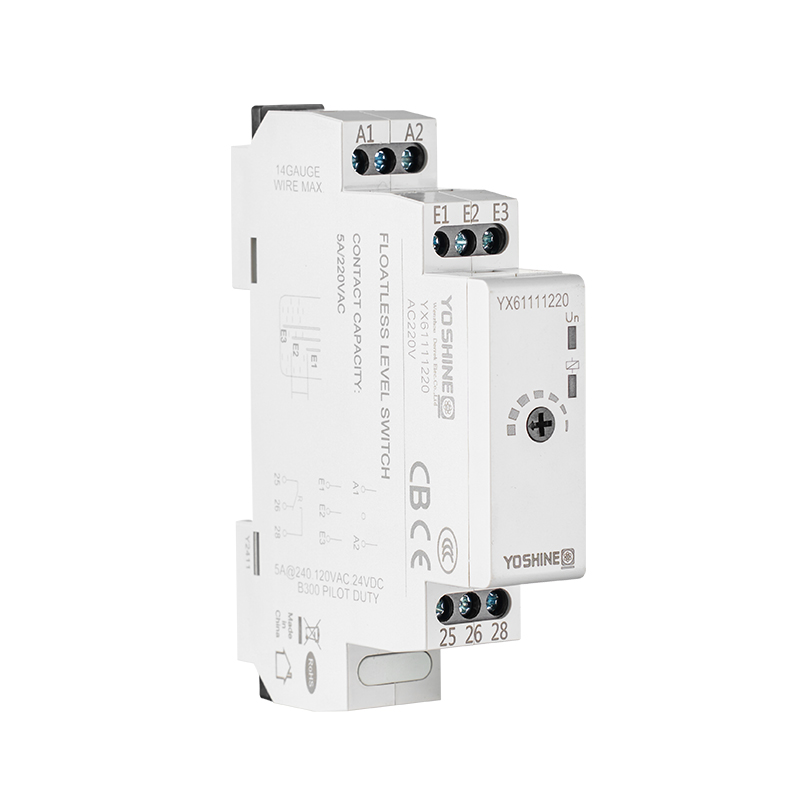
A level controller relay plays a valuable role in modern pump control systems by offering precise and automated regulation of fluid levels. Whether in water treatment plants, industrial tanks, or commercial plumbing systems, maintaining the right liquid level is essential for efficiency, safety, and uninterrupted operations. By incorporating a level controller relay into the control circuit, operators can improve response time, reduce manual intervention, and better protect equipment.
The primary function of a level controller relay is to monitor liquid levels using sensors or float switches and control pumps accordingly. When a certain fluid level is reached, the relay sends a signal to start or stop the pump, maintaining the liquid within a defined range. This automated process prevents common issues such as pump dry running, which can cause overheating, or tank overflow, which can lead to product loss and environmental hazards. By continuously monitoring the liquid level, level controller relays reduce the need for constant human supervision, making them ideal for applications that require reliable, 24/7 operation.
One of the most significant advantages of level controller relays is their accuracy. Manual control methods often suffer from delayed responses, which can lead to inefficiencies or even equipment damage. In contrast, a level controller relay reacts instantly to sensor signals, allowing pumps to adjust in real time. This fast response ensures the system remains within desired operational parameters, providing stable and consistent fluid handling.
Additionally, level controller relays contribute to energy efficiency. Pumps controlled by these relays operate only when necessary, reducing unnecessary runtime and energy consumption. Over time, this not only lowers operating costs but also extends the life of pumps by minimizing wear and tear. As an intelligent switching device, the relay aligns pump operation with actual system demand rather than relying on fixed schedules or manual intervention.
Level controller relays are often highly adjustable, allowing users to define high and low level thresholds based on specific application requirements. This flexibility makes them suitable for a wide range of environments—from shallow sumps to large industrial tanks. Furthermore, these relays are generally compatible with various types of sensors, including float switches, ultrasonic sensors, and capacitive sensors, making integration with existing systems straightforward and convenient.
This adaptability ensures that the same relay can be used in different settings, reducing the need for multiple specialized devices and simplifying system design. For industries that handle different fluids or operate multiple tank sizes, this flexibility is particularly valuable.
Safety is another key benefit of using a level controller relay. Overflows or dry running not only damage pumps but can also create environmental hazards or lead to material loss. By automating control, relays help prevent these conditions, maintaining operational integrity. Some advanced relays can even trigger alarms when abnormal levels are detected, providing an extra layer of protection and allowing operators to respond quickly to potential issues.
Moreover, in processes involving hazardous or expensive liquids, level controller relays help reduce risk by ensuring precise control over fluid volumes. This makes them an important component in industries ranging from chemical manufacturing to food and beverage production.
From an operational perspective, level controller relays are typically compact and easy to install in control panels. Most models feature straightforward wiring terminals and LED indicators, simplifying both monitoring and troubleshooting. Once installed, these relays require minimal maintenance, allowing operators to focus on broader system management tasks rather than constantly adjusting pumps manually.
Level controller relays are widely used across various industries. In water treatment facilities, they help maintain consistent water levels in tanks and reservoirs. In industrial manufacturing, they ensure smooth operation of chemical or cooling fluid systems. Even in commercial and residential plumbing systems, these relays automate water management, reducing human error and enhancing reliability.
The benefits of level controller relays are clear: improved system efficiency, reduced energy consumption, enhanced safety, and less reliance on manual operation. Their adjustable settings, sensor compatibility, and easy integration make them a practical and cost-effective solution for any fluid management system.
Level controller relay enhances pump control systems by offering accurate, automated management of liquid levels. It improves energy efficiency, protects equipment, and provides real-time response to changes in fluid levels. With flexible settings, broad sensor compatibility, and simple installation, these relays are a valuable addition to both simple and complex pump systems. By reducing manual oversight and increasing operational reliability, a level controller relay ensures that fluid systems run smoothly and efficiently across a wide range of applications.